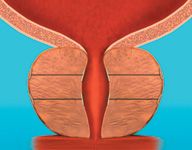Article
Investigational lower urinary tract symptoms (LUTS) treatment shows durable results
An investigational minimally invasive urethral expansion system achieved significant and durable improvement in BPH/lower urinary tract symptoms in a multicenter study.
Washington-An investigational minimally invasive urethral expansion system achieved significant and durable improvement in BPH/lower urinary tract symptoms in a multicenter study.
The mean symptom score declined by about 50% and urinary flow improved by 35% in patients treated with the UroLift prostatic urethral lift system (NeoTract, Inc., Pleasanton, CA). Improvement occurred within 2 weeks of treatment with the system and was maintained during follow-up for as long as 3 years.
The most common adverse events were dysuria, hematuria, and frequency, most of which were mild and transient.
"The prostatic urethral lift has been shown to be a safe and effective treatment for symptomatic BPH with low morbidity," first author Henry Woo, MD, a urologist at the University of Sydney, Australia, reported at the AUA annual meeting in Washington. "The procedure is straightforward and can be conducted under local anesthesia. Patients typically recover quickly, and sexual function appears to be preserved."

Dr. Woo and colleagues presented data on 64 patients treated at six Australian centers. The study's primary objectives were feasibility (procedural completion rate) and safety. The primary efficacy outcomes were changes in the International Prostate Symptom Score (IPSS), quality of life, and the BPH Impact Index (BPH II). Investigators also assessed sexual health, including erectile and ejaculatory function.
The study population had a mean age of 67 years, and prostate volume ranged between 21 cc and 149 cc. Procedures were successful in all 64 study participants, 33 of whom underwent the procedure with local anesthesia.





